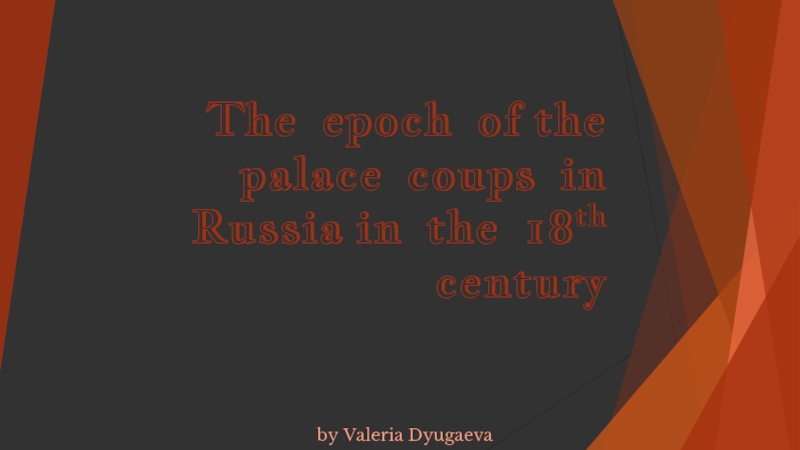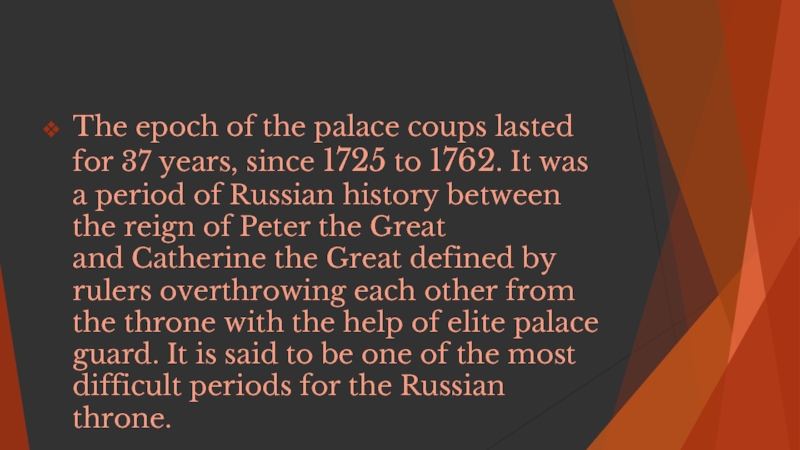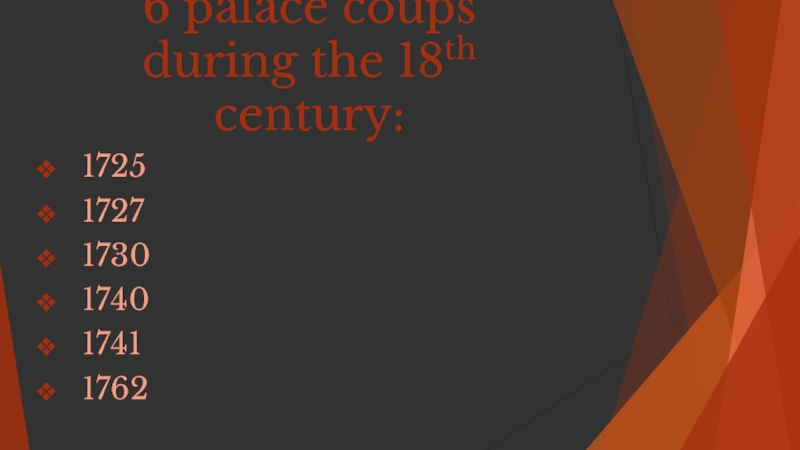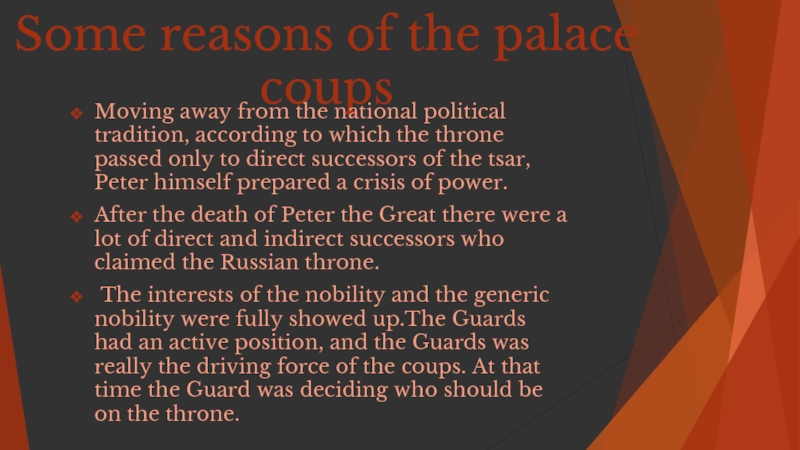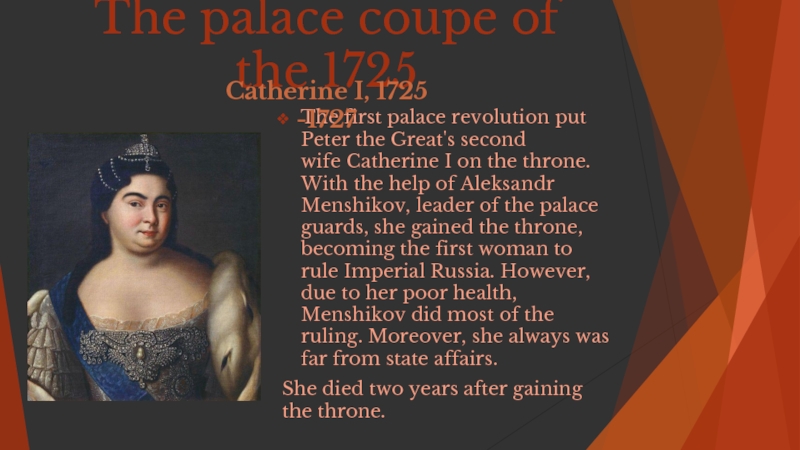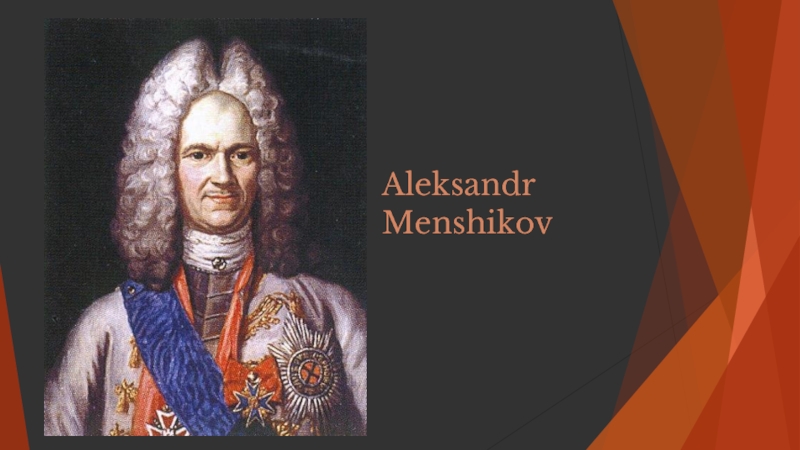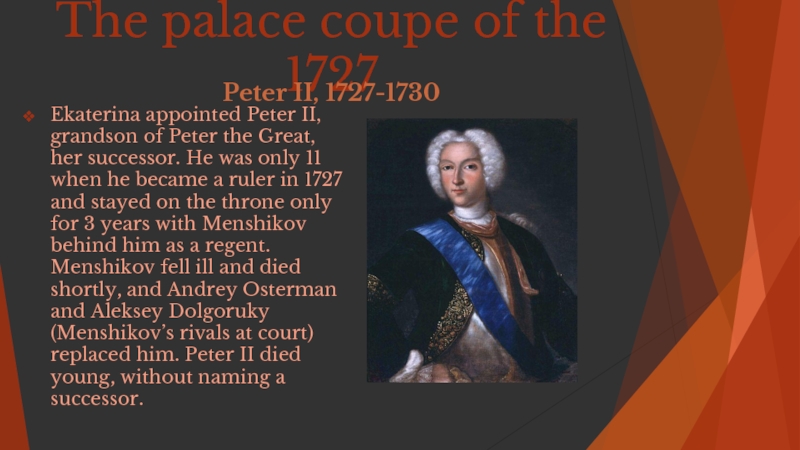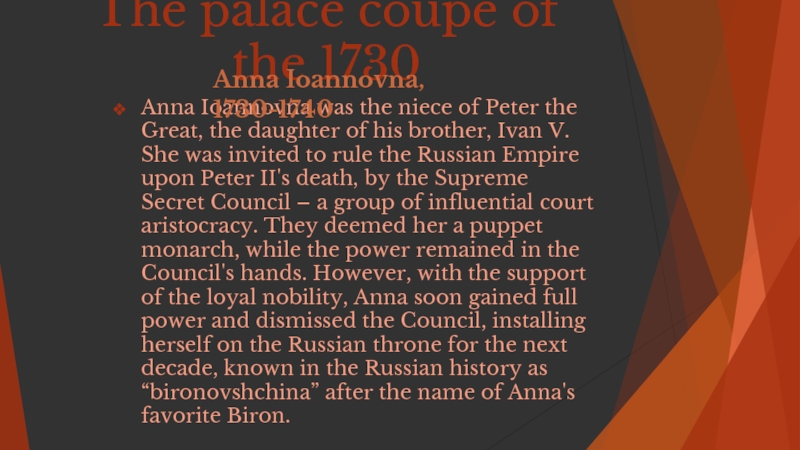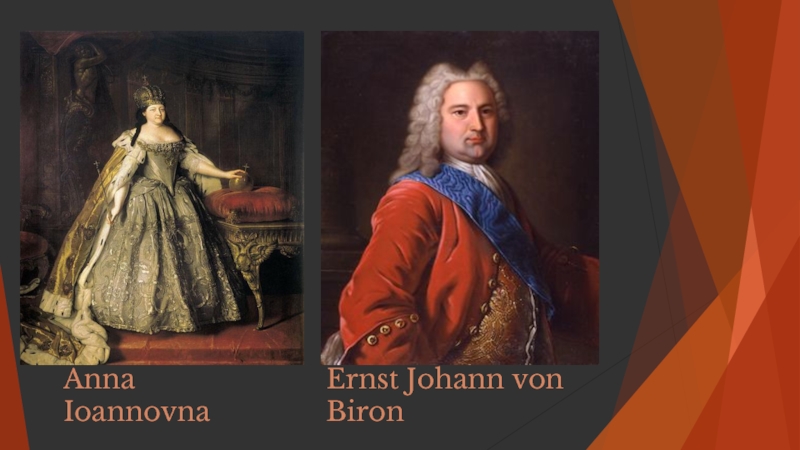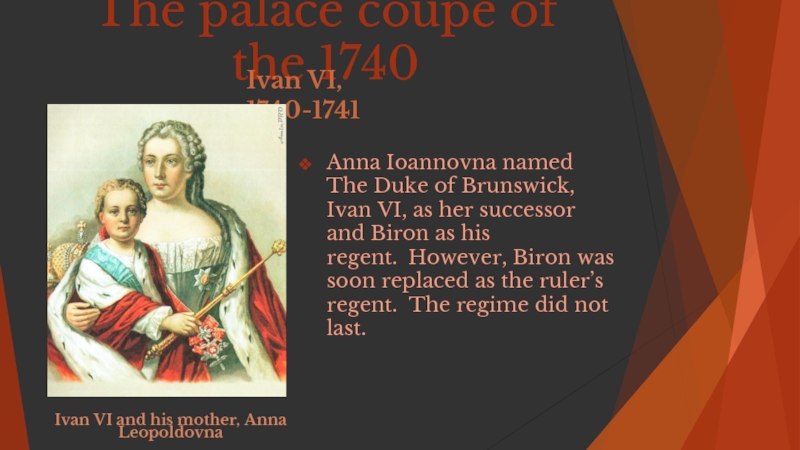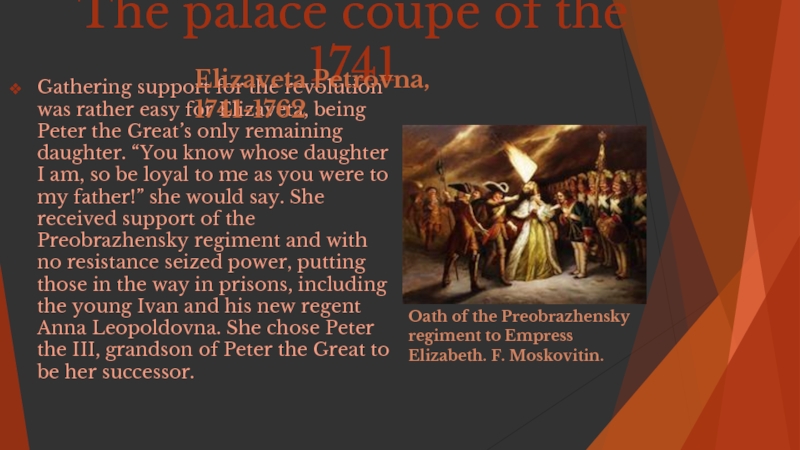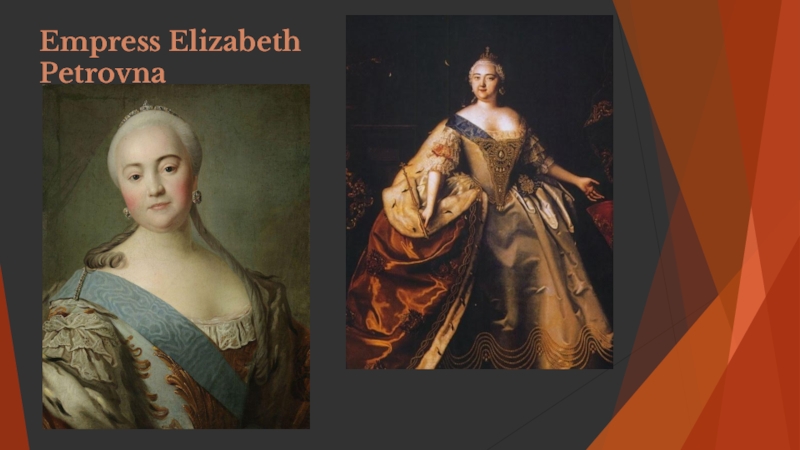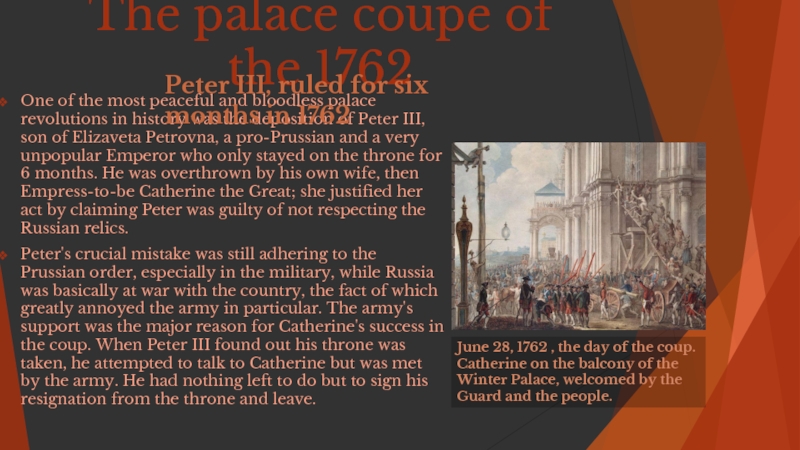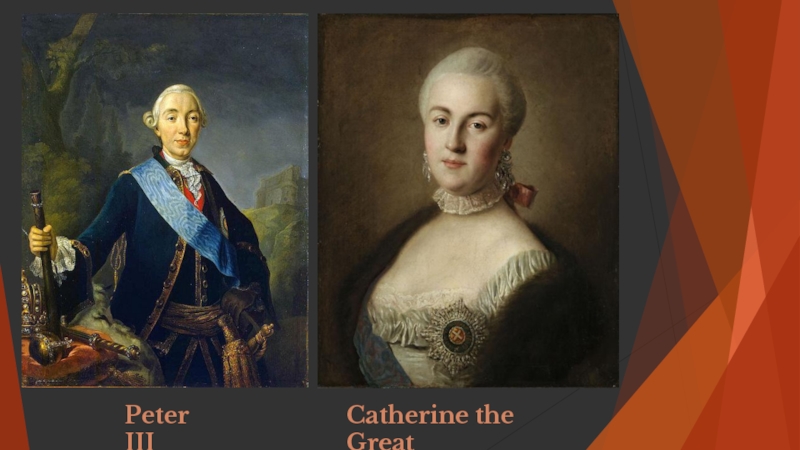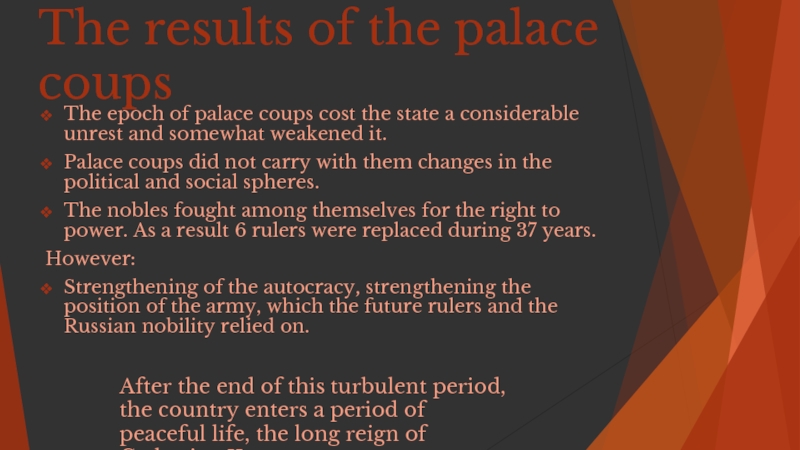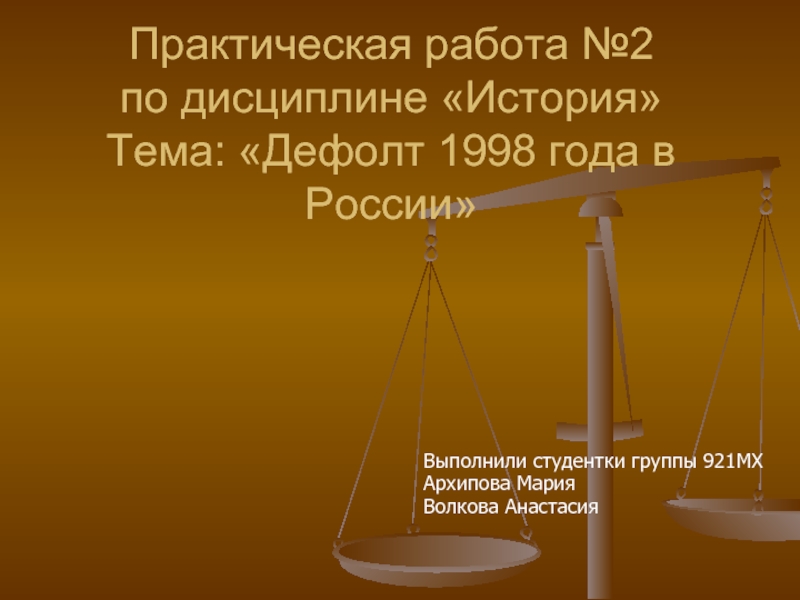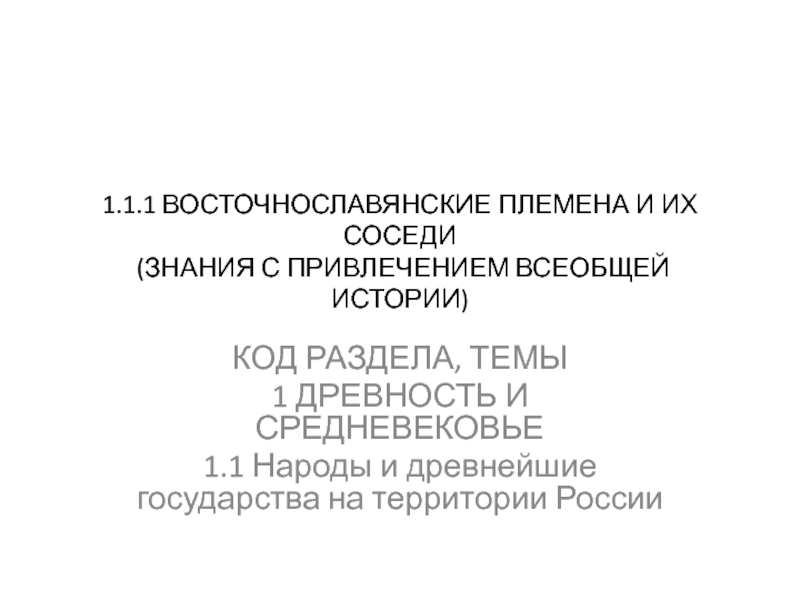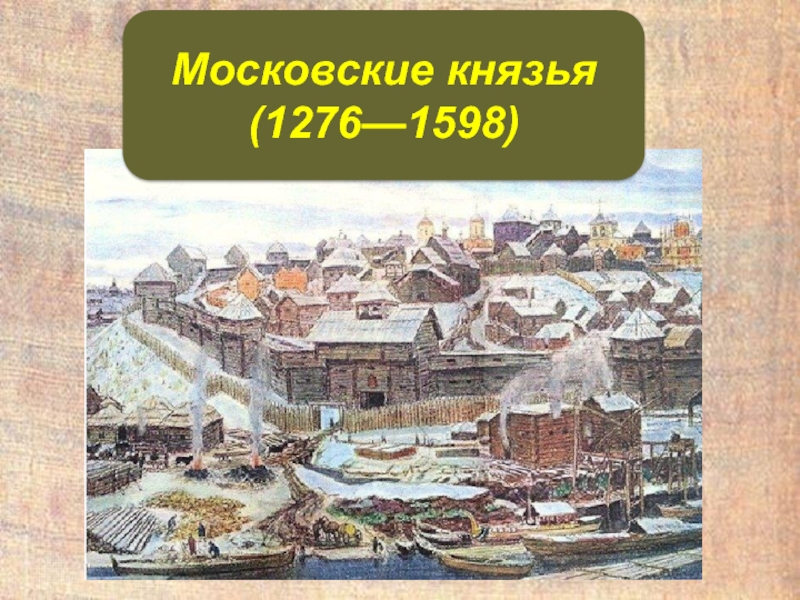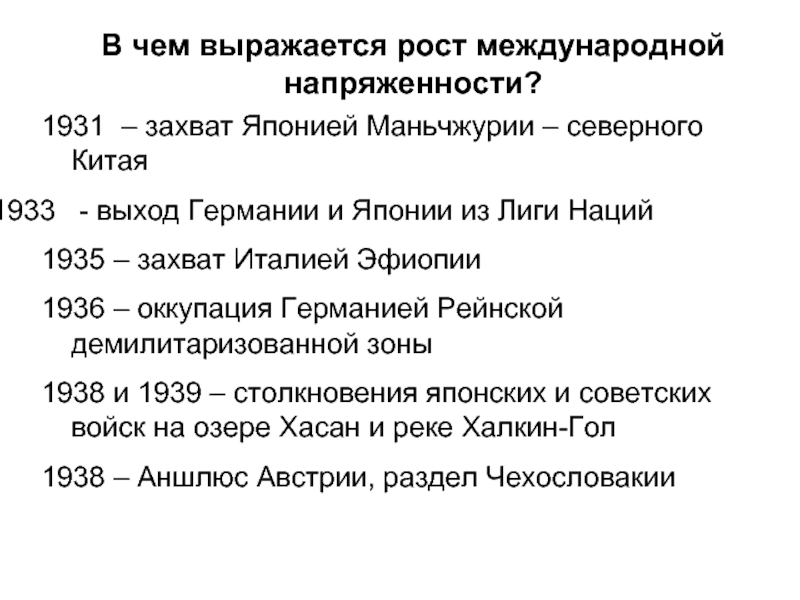by Valeria Dyugaeva
- Главная
- Разное
- Дизайн
- Бизнес и предпринимательство
- Аналитика
- Образование
- Развлечения
- Красота и здоровье
- Финансы
- Государство
- Путешествия
- Спорт
- Недвижимость
- Армия
- Графика
- Культурология
- Еда и кулинария
- Лингвистика
- Английский язык
- Астрономия
- Алгебра
- Биология
- География
- Детские презентации
- Информатика
- История
- Литература
- Маркетинг
- Математика
- Медицина
- Менеджмент
- Музыка
- МХК
- Немецкий язык
- ОБЖ
- Обществознание
- Окружающий мир
- Педагогика
- Русский язык
- Технология
- Физика
- Философия
- Химия
- Шаблоны, картинки для презентаций
- Экология
- Экономика
- Юриспруденция
The epoch of the palace coups in Russia in the 18th century презентация
Содержание
- 1. The epoch of the palace coups in Russia in the 18th century
- 2. The epoch of the palace coups
- 3. 6 palace coups during the 18th century: 1725 1727 1730 1740 1741 1762
- 4. Some preconditions After coming back from his
- 5. Some reasons of the palace coups Moving
- 6. The palace coupe of the 1725
- 7. Aleksandr Menshikov
- 8. The palace coupe of the 1727
- 9. The palace coupe of the 1730
- 10. Ernst Johann von Biron Anna Ioannovna
- 11. The palace coupe of the 1740 Anna
- 12. The palace coupe of the 1741
- 13. Empress Elizabeth Petrovna
- 14. The palace coupe of the 1762
- 15. Peter III Catherine the Great
- 16. The results of the palace coups The
- 17. Thank you for your attention
Слайд 2
The epoch of the palace coups lasted for 37 years, since
Слайд 4Some preconditions
After coming back from his trip around Europe, Peter the
After the death of his first-born Aleksey Romanov who, by the old order, was to succeed Peter the Great on the throne, none of the options of the new replacement for the ruler of Russian Empire seemed acceptable. Peter struggled to make a decision, but died before he did, never having to put the innovation he introduced to the test.
Слайд 5Some reasons of the palace coups
Moving away from the national political
After the death of Peter the Great there were a lot of direct and indirect successors who claimed the Russian throne.
The interests of the nobility and the generic nobility were fully showed up.The Guards had an active position, and the Guards was really the driving force of the coups. At that time the Guard was deciding who should be on the throne.
Слайд 6The palace coupe of the 1725
The first palace revolution put Peter
She died two years after gaining the throne.
Catherine I, 1725 -1727
Слайд 8The palace coupe of the 1727
Ekaterina appointed Peter II, grandson of
Peter II, 1727-1730
Слайд 9The palace coupe of the 1730
Anna Ioannovna was the niece of Peter
Anna Ioannovna, 1730-1740
Слайд 11The palace coupe of the 1740
Anna Ioannovna named The Duke of
Ivan VI, 1740-1741
Ivan VI and his mother, Anna Leopoldovna
Слайд 12The palace coupe of the 1741
Gathering support for the revolution was
Elizaveta Petrovna, 1741-1762
Oath of the Preobrazhensky regiment to Empress Elizabeth. F. Moskovitin.
Слайд 14The palace coupe of the 1762
One of the most peaceful and
Peter's crucial mistake was still adhering to the Prussian order, especially in the military, while Russia was basically at war with the country, the fact of which greatly annoyed the army in particular. The army's support was the major reason for Catherine's success in the coup. When Peter III found out his throne was taken, he attempted to talk to Catherine but was met by the army. He had nothing left to do but to sign his resignation from the throne and leave.
Peter III, ruled for six months in 1762
June 28, 1762 , the day of the coup.
Catherine on the balcony of the Winter Palace, welcomed by the Guard and the people.
Слайд 16The results of the palace coups
The epoch of palace coups cost
Palace coups did not carry with them changes in the political and social spheres.
The nobles fought among themselves for the right to power. As a result 6 rulers were replaced during 37 years.
However:
Strengthening of the autocracy, strengthening the position of the army, which the future rulers and the Russian nobility relied on.
After the end of this turbulent period, the country enters a period of peaceful life, the long reign of Catherine II.
